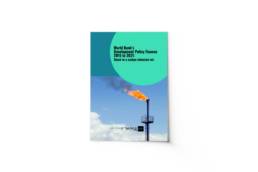World Bank’s Development Policy Finance 2015 to 2021: Stuck in a carbon intensive rut
Development Policy Finance (DPF) in Indo- nesia and Pakistan portrays the World Bank’s particular emphasis on accelerating the use of natural gas and how it supports fragile en- ergy sectors that are heavily invested in coal.
The World Bank’s DPF Retrospective July 2015 to July 2021 asks how effective World Bank DPFs have been in supporting coun- tries to achieve their development goals. This report responds to that question with a focus on climate related reforms.
These case studies demonstrate how DPF can influence investment decisions towards either carbon-intensive development, such as gas or coal, or low-carbon develop- ment. Worryingly, the World Bank’s 2021 Climate Action Plan1 still identifies gas as a transition or “bridging fuel” and is pro- actively promoting gas through its lending instruments and advisory services including DPF, Project for Results (P4Rs) and Technical Assistance (ASAs).


